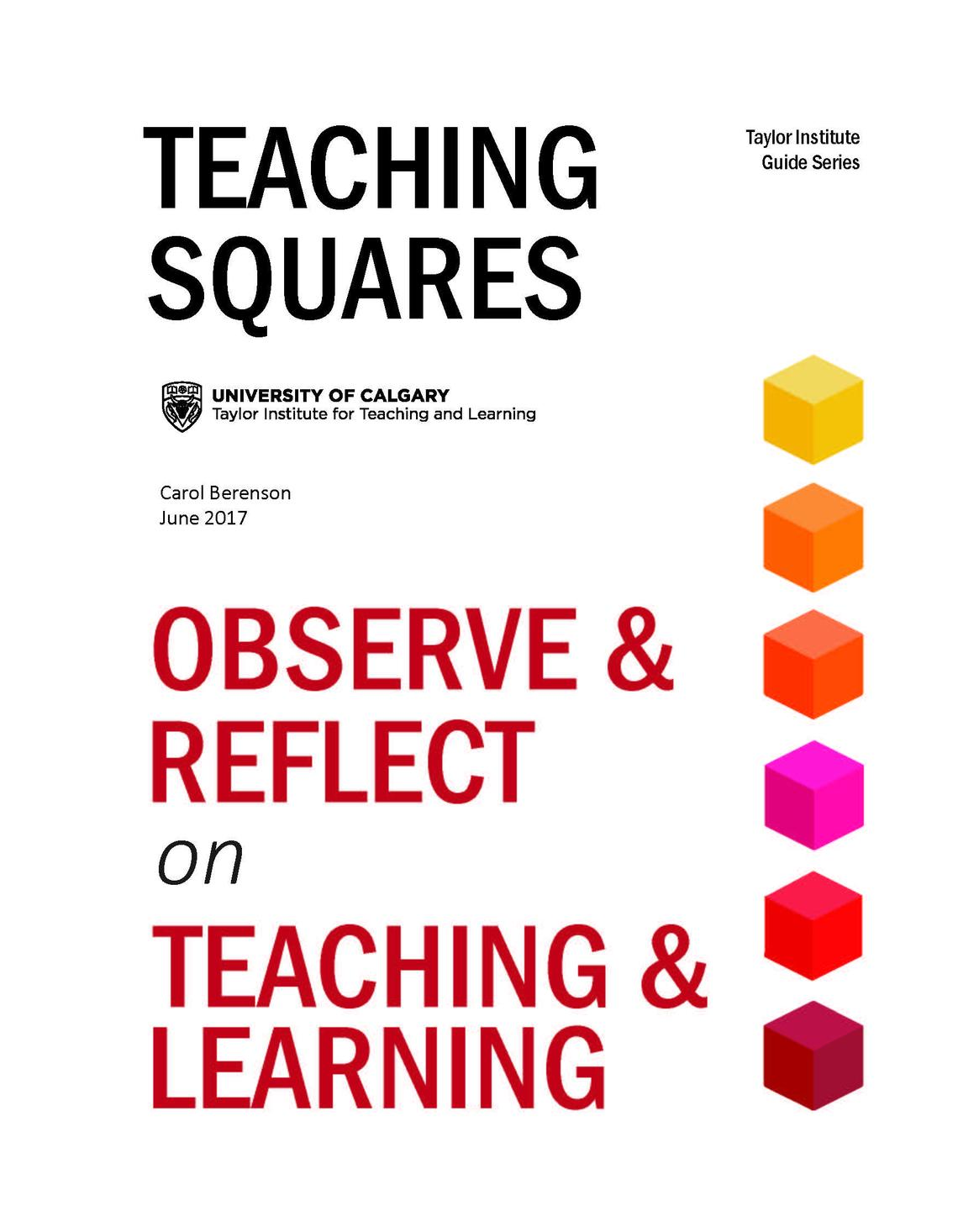Teaching Squares
Peer observation of teaching programs are becoming increasingly popular in the postsecondary environment as they provide unique and valuable opportunities to learn from colleagues and to enhance one’s own teaching. This guide outlines the Teaching Squares philosophy and method for peer observation of teaching and learning. Practical directions and tools to guide square participants through the components of the Teaching Squares process are included in the document. The guide can be used or adapted to implement a teaching square with peers in your context.

Peer observation of teaching programs are becoming increasingly popular in the postsecondary environment as they provide unique and valuable opportunities to learn from colleagues and to enhance one’s own teaching. While conventional programs emphasize observing one’s peers with an eye toward evaluating and providing feedback, the Teaching Squares approach involves reflecting on what can be learned about one’s own teaching by observing colleagues. Rather than emphasizing peer critique and the giving and receiving of evaluative feedback, here the focus is on self-evaluation and reflection. Participants in a Teaching Square can expect to gain new insights into teaching and learning, increase their appreciation for the work of colleagues, gather new ideas to develop their own teaching repertoire and philosophy, and formulate a plan for trying out new approaches.
This guide moves readers through the process of organizing and implementing a Teaching Square and includes numerous tools and templates that can be used to support and enhance observation and critical reflection skills. The guide can be used or adapted to implement a teaching square with peers in your context.
